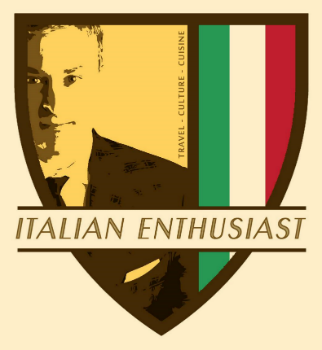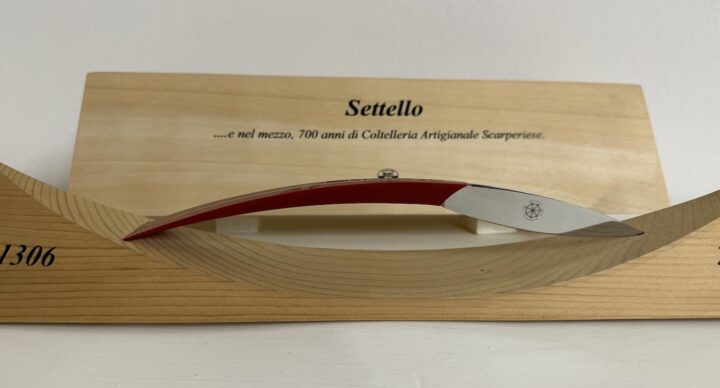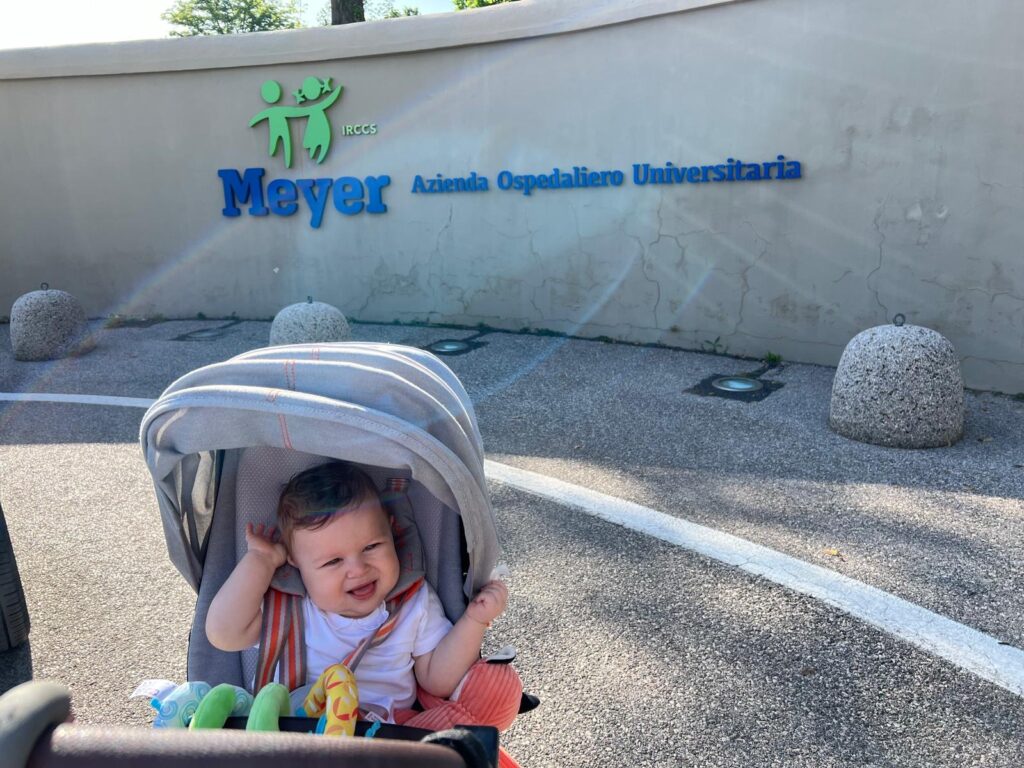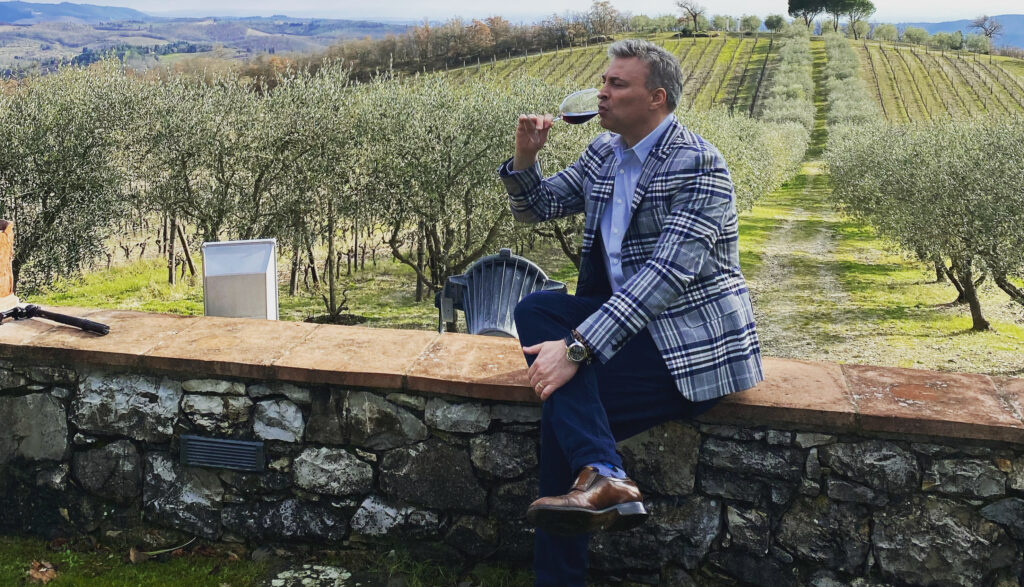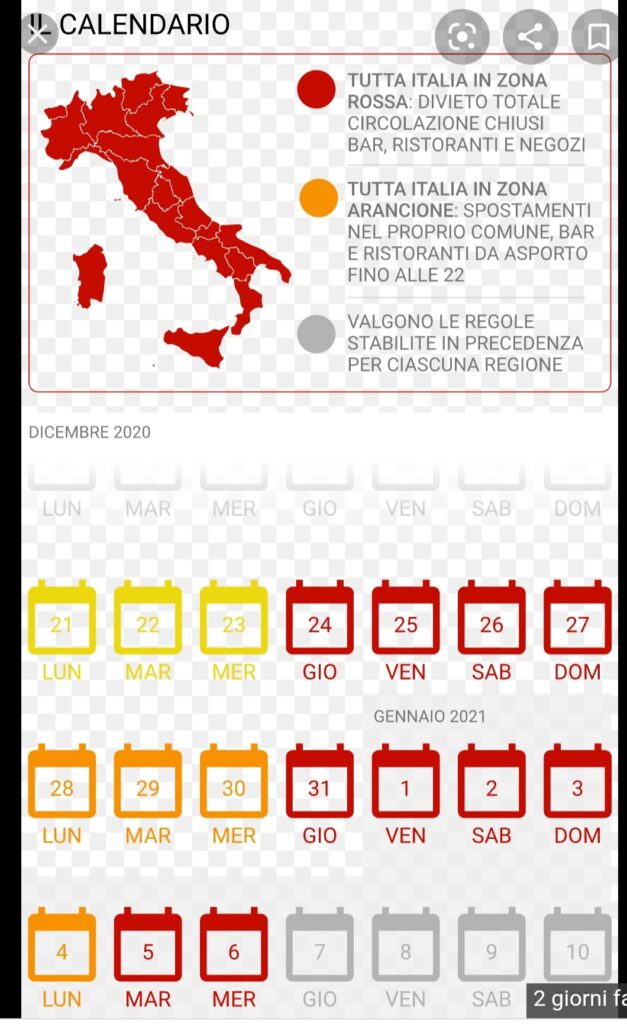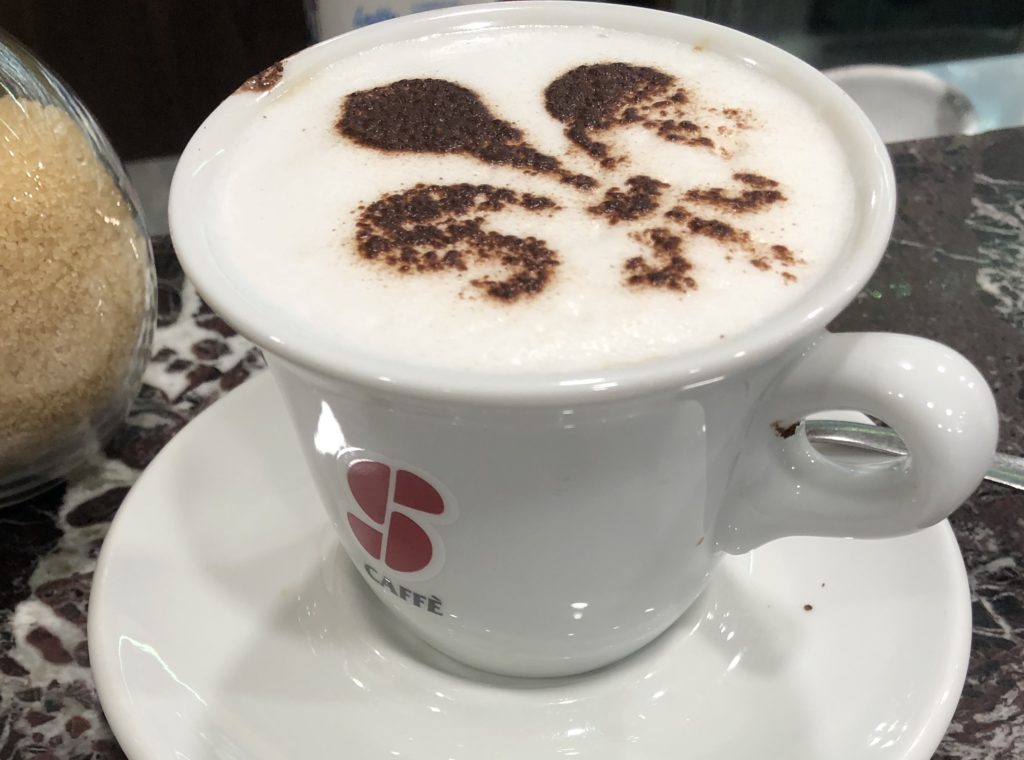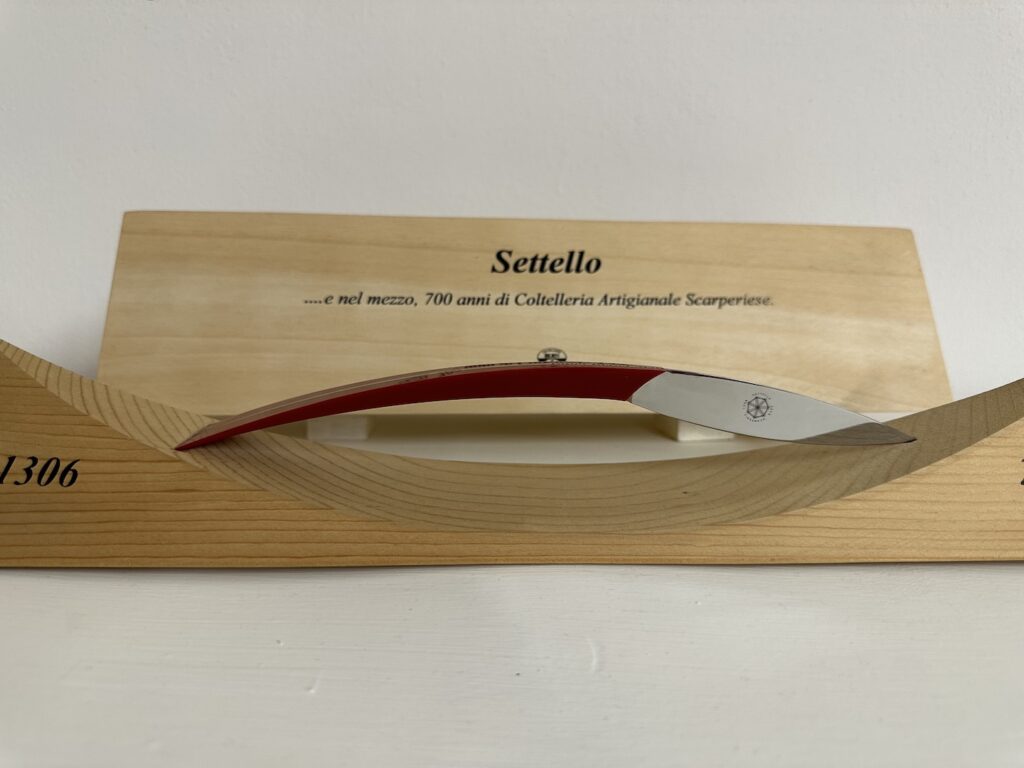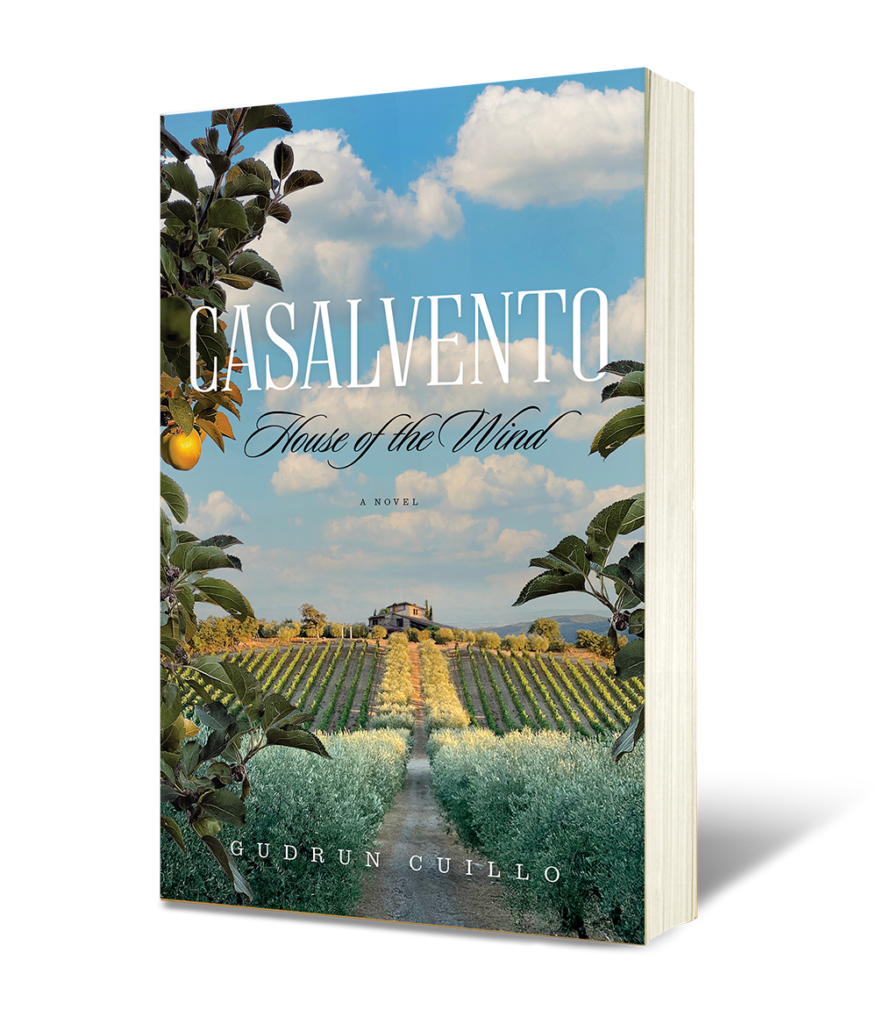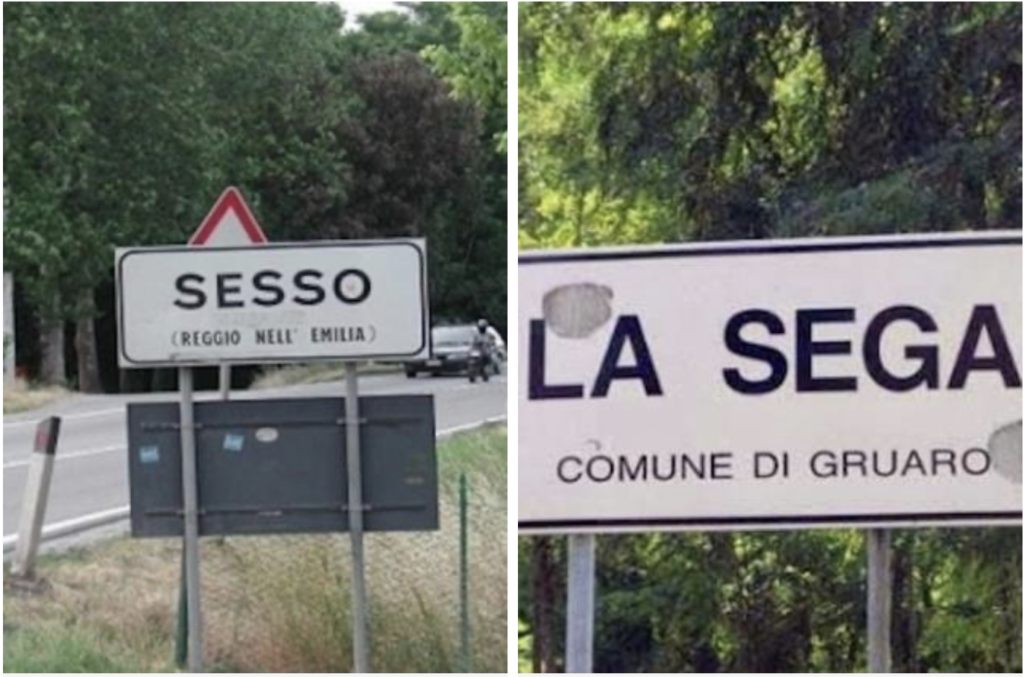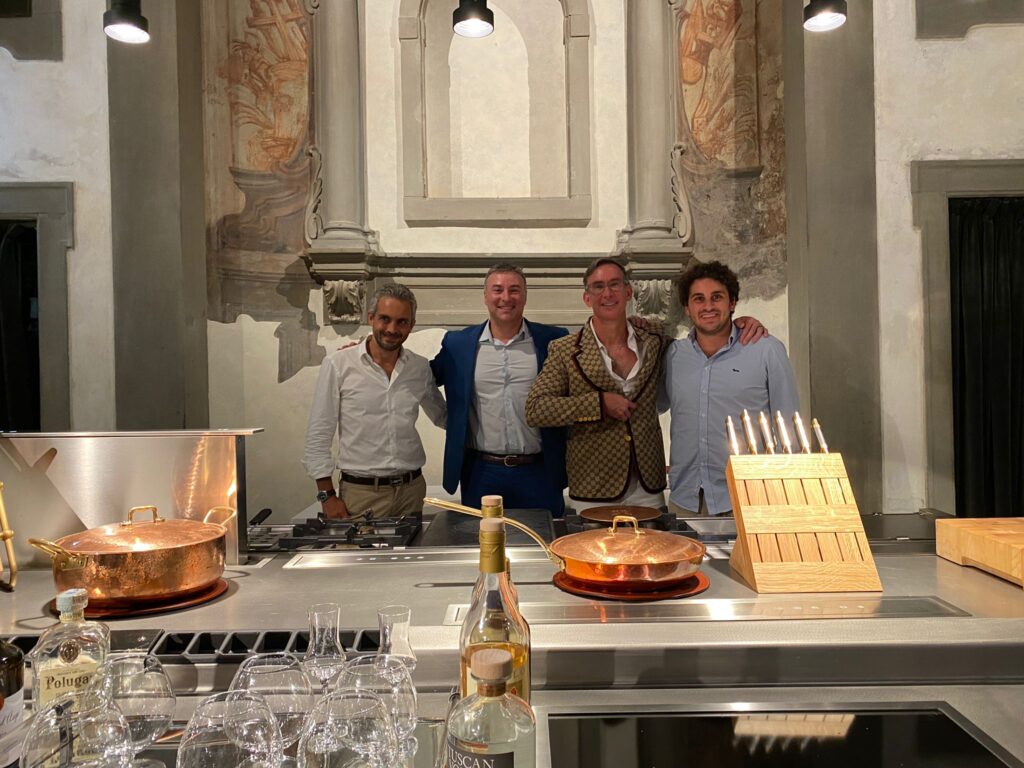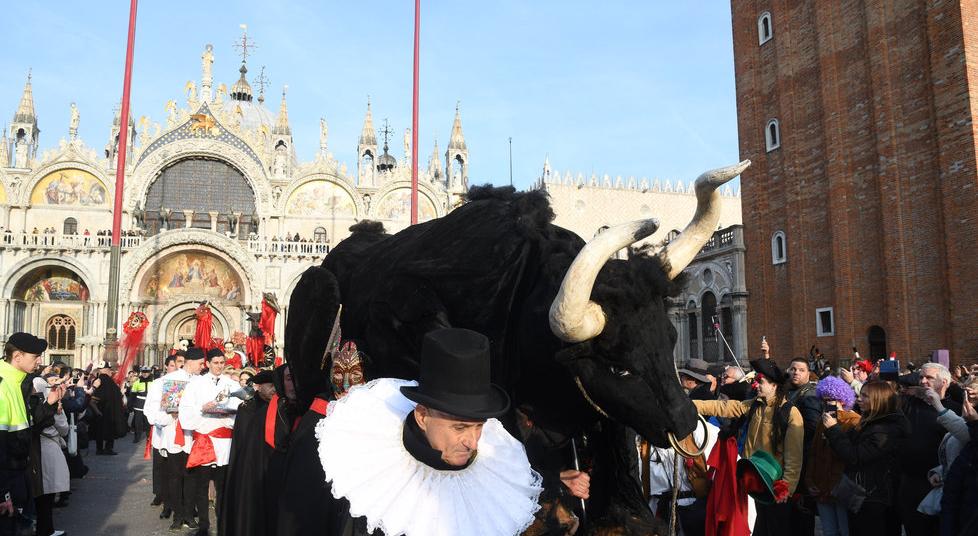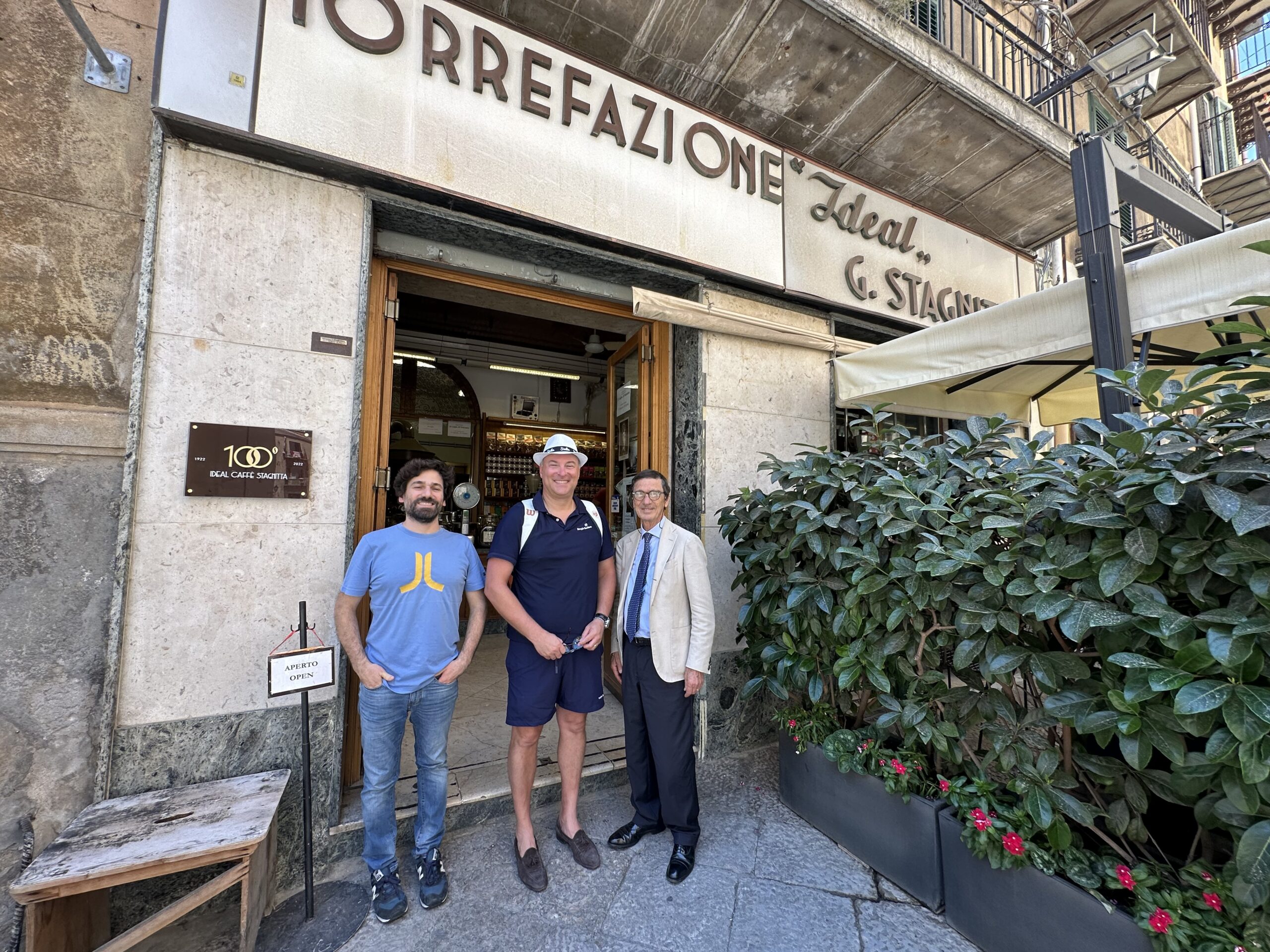
CONTACT
ITALIAN ENTHUSIAST
-
 Transportation in ItalyAugust 1, 2016CONTINUE READING
Transportation in ItalyAugust 1, 2016CONTINUE READING -
 Sneakers with Suits - Italian StyleMarch 21, 2018CONTINUE READING
Sneakers with Suits - Italian StyleMarch 21, 2018CONTINUE READING -
 HISTORY OF SOUTHERN ITALIAN MUSIC: TARANTELLAMay 6, 2018CONTINUE READING
HISTORY OF SOUTHERN ITALIAN MUSIC: TARANTELLAMay 6, 2018CONTINUE READING -
 Saint Joseph's Day Tradition Elaborately Maintained in Southern PugliaMarch 24, 2019CONTINUE READING
Saint Joseph's Day Tradition Elaborately Maintained in Southern PugliaMarch 24, 2019CONTINUE READING -
 THE ITALIAN ENTHUSIAST LAUNCHES FAMILY VLOG ON YOUTUBE - THE BARBUTO FAMILYOctober 13, 2020CONTINUE READING
THE ITALIAN ENTHUSIAST LAUNCHES FAMILY VLOG ON YOUTUBE - THE BARBUTO FAMILYOctober 13, 2020CONTINUE READING -
 Livernano - The Superior Tuscan ResortJune 25, 2021CONTINUE READING
Livernano - The Superior Tuscan ResortJune 25, 2021CONTINUE READING
Latest Posts

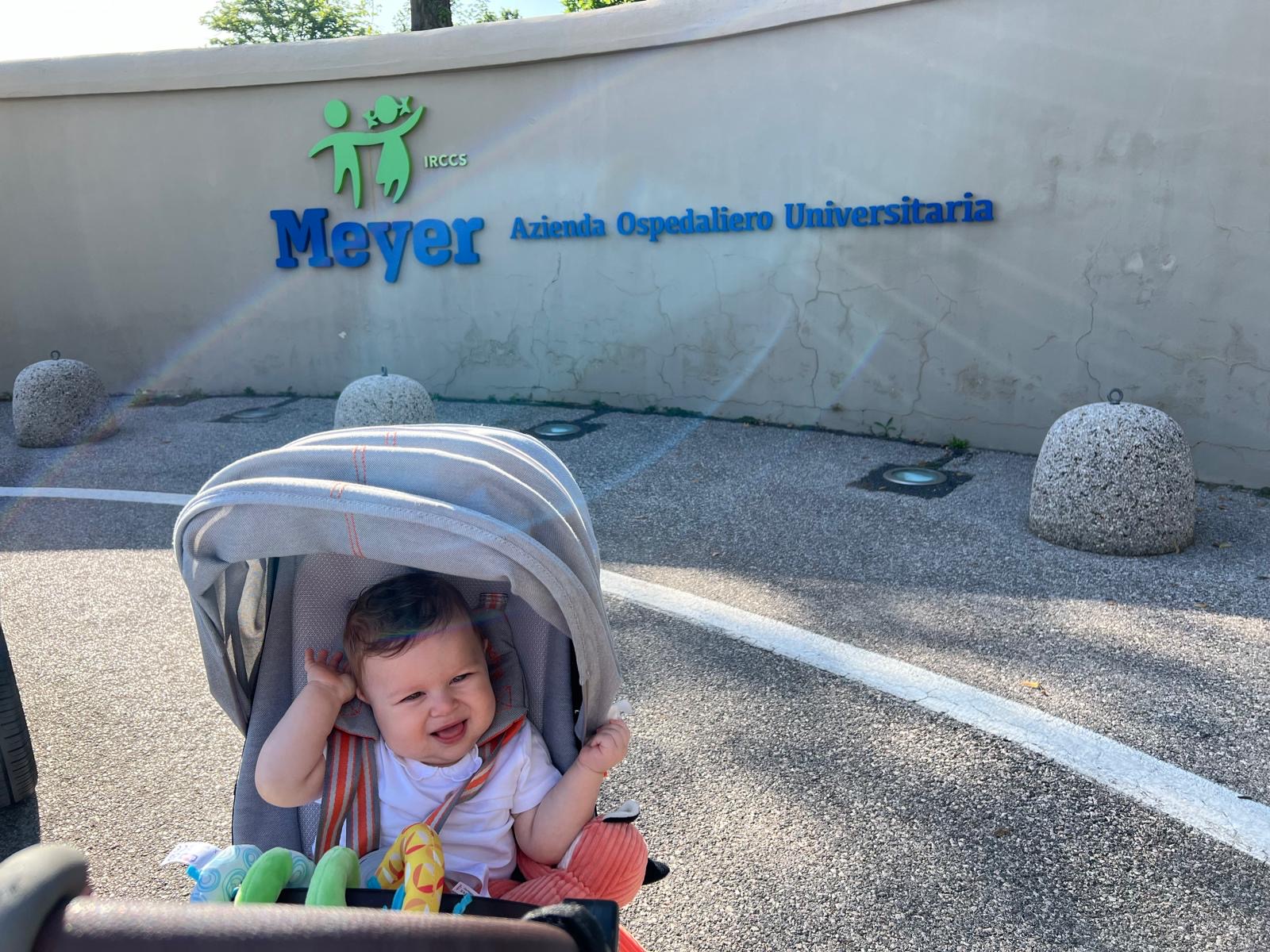
When My Infant Fell Ill in Italy – Discovering the Excellence of Italian Healthcare
June 29, 2024 /by Anthony Barbuto
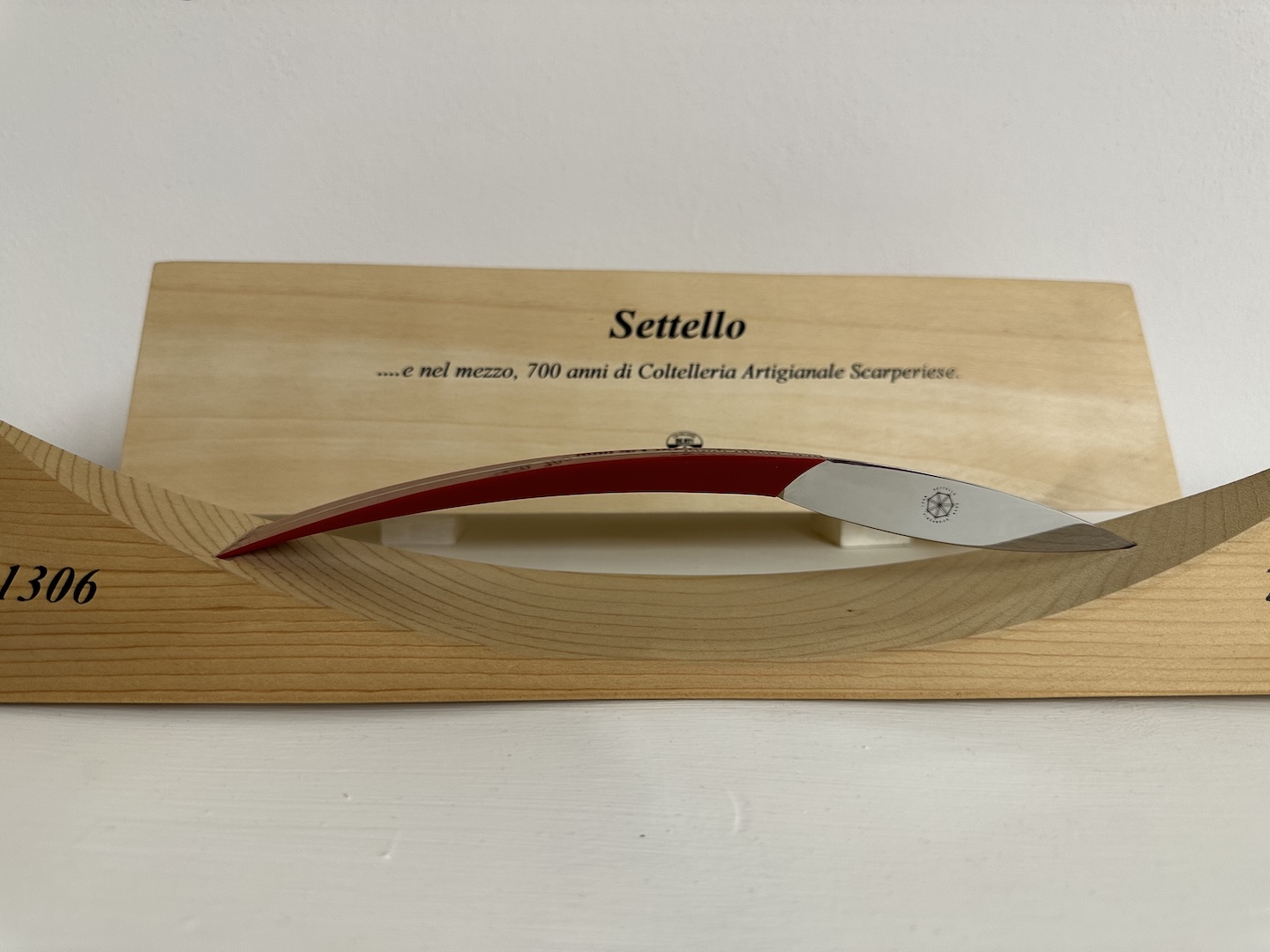
THE ITALIAN KNIFE CAPITAL – SCARPERIA, ITALY
June 22, 2024 /by Anthony Barbuto

THE BEST FAMILY BEACHES OF SIRACUSA, SICILY
June 21, 2024 /by Anthony Barbuto
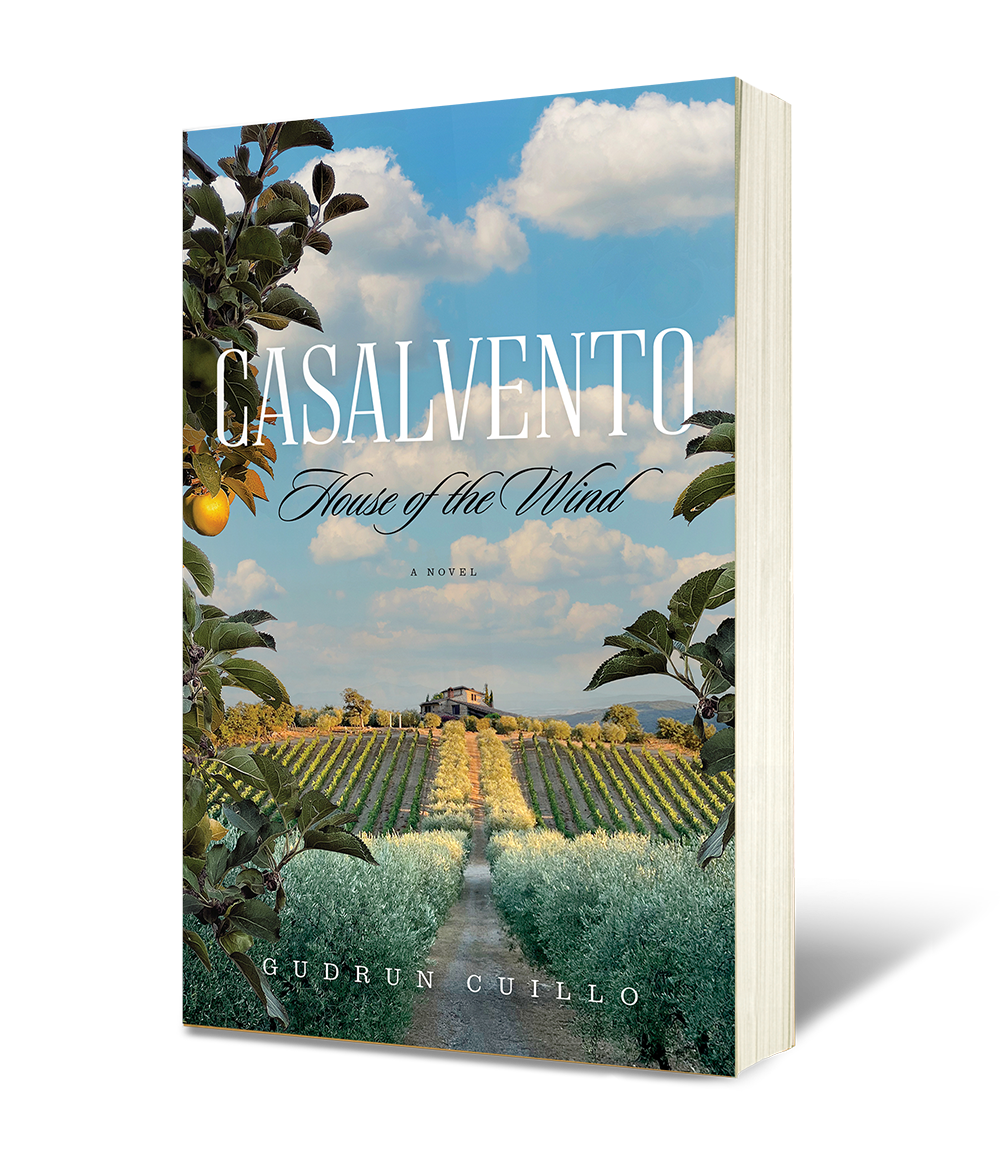
SUMMER READING FOR ITALIAN ENTHUSIASTS
June 06, 2023 /by Anthony Barbuto
Fashion

Oct 19 2020
31177
The Italian Man’s Love for Hairy Women
by Anthony Barbuto in Fashion

Jul 16 2020
7008
The Italian Art of Cameo Carving – Bimonte Sorrento
by Anthony Barbuto in Fashion
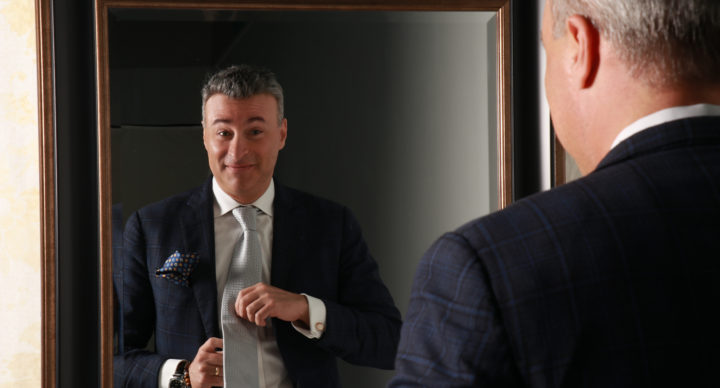
Jul 04 2020
6877
Italo Ferretti – Italian Luxury Ties & Accessories
by Anthony Barbuto in Fashion
LATEST VIDEOS
Family Trip to Lake Como
Day in Rome
Rome's Profane Welcome
Porto Cervo Downtown
Beach Day in Sardinia
From Pisa to Porto Cervo
Traditional Southern Italian Music called Pizzica
The Number 1 Coppersmith in Southern Italy
Italian Baptism in 13th Century Church in Florence, Italy
Night Out with the Italian Boys in Tuscany
Learning Italian Gestures During Dinner in Italy
Winemaking in Italy at Casalevento
Tour of Italian Toy Store in Florence - DREONI
The Number 1 Italian Joke Explained
7 Reasons NOT to Travel to Tuscany
10 Tips Everyone Should Know Before Visiting Italy
UNA BELLA SERATE A Los Angeles [ITALIAN w/ ENG SUB]
INTRODUCING THE 4TH OF JULY TO ITALIANS!
ITALIAN CANDY vs. AMERICAN CANDY (IN ITALIAN)
TOUR OF A LUXURY TUSCAN VINEYARD AND RESORT!
TOUR DEL MIO STUDIO LEGALE IN AMERICA
AUTHENTIC ITALIAN LUNCH IN FLORENCE DURING LOCKDOWN
The Italian Enthusiast brings the HOT CHIP CHALLENGE to ITALY!!!
The Italian Enthusiast compares Italian Snacks to American Snacks (in the Italian language)!!!!!
The Italian Enthusiast Speaks with Famous Italian Radio Show from Puglia
The Italian Enthusiast Bakes an Authentic Italian Cheesecake with Family
The Italian Enthusiast Launches a Family Vlog on YouTube
Getting People to Dance the Pizzica Around the World during Quarantine
FOOD & WINE

June 02, 2023
ITALY VS. USA – A COMPARISON OF SUMMER CAMP LUNCH MENUS
by Anthony Barbuto in Food & Wine
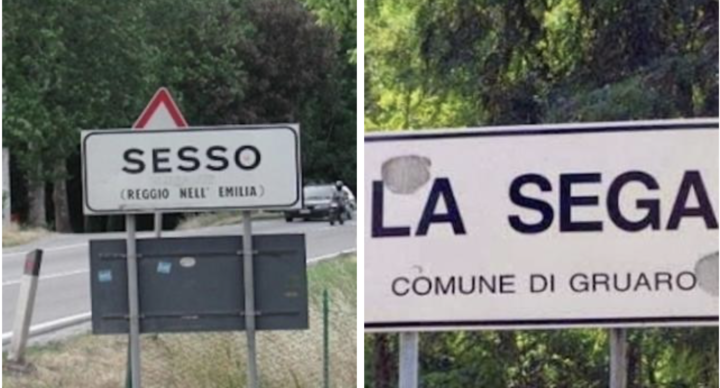
March 23, 2022
VULGAR ITALIAN NAMES OF ITALY’S FOOD, WINE AND TOWNS
I love places that have an incredible history. I love the Italian way of life. I love the food. I love the people. I love the attitudes of Italians.
Elton John
You may have the universe if I may have Italy
Giuseppe Verdi
Travel
Discovering the Timeless Charm of Ideal Caffè Stagnitta in Palermo, Sicily
During my recent trip to the enchanting city of Palermo, Sicily, I stumbled upon a hidden gem that left an indelible mark on my heart: Ideal Caffè Stagnitta. As an avid lover of all things Italian, I couldn't resist the allure of visiting this famous coffee shop, renowned for its rich history and exceptional coffee. Little did I know, my visit would be like stepping into a time capsule, taking me back to 1922, the year it all began. Ideal Caffè Stagnitta was founded by Giovanni Stagnitta and has since become a household name in Sicily. What truly impressed me was that the coffee shop has remained virtually unchanged since its inception. The original design, including a coffee machine over 70 years old, transports you back to the early days of the caffé, making you feel as if you are reliving history with every sip. I had the privilege of meeting the father and son duo who currently own and operate Ideal Caffè Stagnitta. Their passion for coffee and dedication to preserving their family's legacy was palpable. Their stories and warm hospitality added a personal touch to my experience, making it even more memorable. They shared with me their family's commitment to quality and tradition, ensuring that each cup of coffee served is a work of art. Located in the historic center of Palermo, on Discesa dei Giudici, Ideal Caffè Stagnitta is more than just a coffee shop; it's a living museum. The shop's interior, with its rich, warm style and valuable wooden sculptures, reflects the old-fashioned charm of a bygone era. These sculptures, crafted by the illustrious master cabinetmaker D’Angelo in 1951, depict the ancient art of coffee cultivation, adding to the shop's historic ambiance As I sat down to enjoy my espresso, I couldn't help but feel a...
Continue Reading
When My Infant Fell Ill in Italy – Discovering the Excellence of Italian Healthcare
My 8-month-old daughter, Camilla, just arrived in Italy to kick off our summer 2024 trip with my wife a week before my arrival with our two older kids. Unfortunately, Camilla touched down on Italian soil for the first time with a high fever and stomach issues, and upon consulting with our Florida pediatrician, my wife was advised to bring her immediately to an Italian emergency room. When I heard the news, I felt a profound sense of relief. My trust in the Italian healthcare system, and more particularly the prestigious Meyer Children's Hospital in Florence, with its reputation for thorough, compassionate care and a focus on patient well-being rather than profit, reassured me. We previously had a positive experience at Meyer when our daughter, Sofia, was an infant, which I wrote a POST about in 2019. Based upon my past experience and the reputation of the Italian healthcare system, I knew that the Italian doctors would take their time with Camilla and ensure that she receives the best possible treatment without the burden of financial worries. In contrast, if we were still in the United States, my feelings would have been vastly different. I would have felt scared and anxious, doubting the quality of care she would receive. In my experience, American hospital doctors often seem rushed, and their hospital room visits brief and impersonal. The experience in a U.S. hospital can feel transactional, with a greater emphasis on moving patients through the system quickly rather than ensuring comprehensive care. I would have also felt angry and frustrated about the financial implications. The exorbitant costs associated with U.S. healthcare, combined with what I perceive as subpar service, would have left me feeling ripped off and resentful. Instead of focusing solely on my daughter's recovery, I would have been preoccupied with...
Continue Reading
THE ITALIAN KNIFE CAPITAL – SCARPERIA, ITALY
When one thinks of Italy, the mind often drifts to images of bustling piazzas, delectable cuisine, and breathtaking art. However, my recent journey to the quaint town of Scarperia introduced me to a lesser-known but equally fascinating aspect of Italian culture: the art of knife making. Scarperia, nestled in the Tuscan hills, is renowned for its handcrafted knives, a tradition steeped in centuries of heritage and skill. The town’s reputation for knife making dates back to 1306, when it was founded by the Republic of Florence. The tradition of knife making in Scarperia has been preserved and passed down through generations, with each knife telling a story of meticulous craftsmanship and passion. In July 2023, I surprised my wife with a romantic weekend getaway to Scarperia, without the kids. A short train ride from Florence, Scarperia is located in the Mugello area of Tuscany, which is also known for Grand Prix motorcycle racing. As we arrived, I noticed the large amount of knife stores on the main streets displaying in their windows mainly dinnerware knives, but also cutlery ranging from shaving blades to machetes. My wife and I were certainly in the market for some nice Italian knives, but there were so many options to choose from! After visiting some stores, we learned that the process of crafting a traditional Italian knife in Scarperia is an intricate dance of skill and patience. The process begins with the selection of horn, a critical component that dictates the shape and size of the knife. Once the horn is selected, the cutler moves on to the blade. The components are then meticulously modeled, forged, and tempered to achieve the desired strength and durability. One of the highlights of our trip was meeting a master cutler named Giacomo Cecchi from the Saladini cutlery. Signor Cecchi...
Continue Reading
THE BEST FAMILY BEACHES OF SIRACUSA, SICILY
As an American who grew up at the Jersey Shore where the ocean waters are brown and opaque, I learned to appreciate the beauty and purity of crystal clear seas. Italy is filled with beaches similar to the Jersey Shore, but like most countries, it also has its gems. Each summer my family and I visit different beaches in Italy, with the goal of visiting some of the most beautiful beaches Italy has to offer. I recall doing Google searches years ago, only to find various blog articles claiming that the most beautiful Italian beaches are in either Sicily or Sardinia. Then, after interviewing many Italians over the years, I'd say half believe the most beautiful beaches are in Sicily, while the other half are in Sardinia. We started visiting both Sicily and Sardinia four years ago, and based upon my research and personal experience, I am comfortable stating with confidence that the best beaches in Italy are indeed in Sicily and Sardinia. Many of our family Italian beach vlogs can be viewed on our family YouTube channel in the travel section. Last summer (2023) we visited the Sicilian province of Siracusa, which is located in the Southeast corner of Sicily. We had an amazing experience. We stayed at a beautiful AIRBNB in a small town outside of the city of Siracusa called Fontane Bianche. Fontane Bianche is a popular beach town centrally located to many of the top beaches of Siracusa. The town has a little coffee shop and a supermarket typical to small Italian villages. There is also a popular pizzeria in town for casual dinners after a long day in the sun. Over all, we visited several beaches in the province of Siracusa which I will share below. But first, it is important to understand how most...
Continue Reading
SUMMER READING FOR ITALIAN ENTHUSIASTS
Italian Enthusiasts who've seen my videos of the Casalvento retreat in the heart of Tuscany's Chianti region, including Luxury Tuscan Resort, Barbecue at a Tuscan Vineyard, and Winemaking in Italy, agree that a piece of heaven does exist on earth. If you've been to Tuscany, seen it in videos, or even read about it, the desire to visit can get intense. Gudrun Cuillo, the owner of Casalvento, has opened up her Tuscan properties to tourists to experience life at the retreat. For those who are not able to visit, she's now opened up Casalvento to readers worldwide in her new bestselling novel, Casalvento - House of the Wind. Ms. Cuillo's new novel intertwines romance and family secrets in the precise setting of Casalvento, where she not only found her inspiration to write, but also penned the entire novel looking over the breathtaking vineyard. A summary of the novel can be found here. Casalvento With summer 2023 approaching and Italy's tourist season already in full swing, there is no better time to purchase Casalvento - House of the Wind, which was released today! If you enjoy Tuscany, romance and suspense, then this book is a must read for all Italian Enthusiasts.
ITALY VS. USA – A COMPARISON OF SUMMER CAMP LUNCH MENUS
Summer months in my family are spent equally in Florida and in Florence. With a first grader and kindergartener, one of our goals is to find good summer camps for the children to keep their minds active and to maintain socialization with a diverse group of peers. We've discovered, however, that one of the main differences between American camps vs. Italian camps (other than the obvious language differences), is the food selection. As an American, my recollection of school lunches consists of pizza wedges, tater tots, nuggets, and chocolate milk. Fast forward to 2023 with my children in school, lunch menus in the US seem to have only slightly developed, now offering a few other options such as chicken patties, PB&J, and cheeseburgers. Aside from the limited selection at schools and camps, school food in the United States has a terrible reputation, believed to be neither desirable nor nutritious by students and parents alike. A 2009 report by USA TODAY found that meat served in the United States schools wouldn’t meet the quality or safety standards of fast-food restaurants. Further, according to a GREEN MATTERS article, "[b]ecause of the low budgets ... and in order to have ingredients with longer shelf lives, school cafeterias often opt for processed foods that are high in preservatives" which is why many of the meals on American lunch trays consist of "shriveled hamburgers, browning iceberg lettuce, stale fries, and greasy AF pizza." For these reasons, my wife often packs a lunch for our children during the school year, and after seeing the lunch menus for summer camps here in Florida, we decided to opt out of the lunch program altogether. My children will therefore spend the first half of their summer in Florida bringing with them bagged lunches to camp. The second half of the...
Continue Reading
VULGAR ITALIAN NAMES OF ITALY’S FOOD, WINE AND TOWNS
Italian Enthusiasts proficient in the Italian language are quick to recognize strange names of Italian foods, drinks and places, especially if they have vulgar meanings. America, for example, censors nudity on television and in magazines while Italy takes a more open approach, often displaying nudity to the public across all channels. Similar to Italy’s approval of nudity (in comparison to the United States), Italy takes a similar approach with its language, often referring to foods, drinks and towns by names most Americans would find inappropriate. For Italian Enthusiasts, however, they are funny and culturally fascinating. See below for some examples, broken down by categories of Food, Wine and Towns. FOOD Gnocchi. Gnocchi is a type of pasta we all love, but the meaning comes from the female private part. The name derives from La Gnocca, which in Italian means “pussy” because of the shape and the softness of the pasta. So when you order Gnocchi for dinner, you are also asking the chef for a plate of pussy. Cazzilli di Patate. In Palermo, there is a popular dish called Cazzilli di Patate, which means “Small Dicks of Potatoes”. The name comes from the fact that the food is small and shaped like penises, sort of like croquettes. Spaghetti alla Puttanesca. In Naples, a popular spaghetti is called Spaghetti alla Putanesca, which in English means “Whore’s Pasta”. This dish includes poor ingredients, such as olives, capers and tomato sauce - very easy ingredients to find in Naples. The dish was regularly served in brothels for this reason. Palle del Nonno. In Tuscany, there is a popular salami called Palle del Nonno, which means "Grandpa's Balls". It is pig salami that has a falling shape, appearing like an elderly man's testicles. Coglioni di Mulo. In Abruzzo, there is a popular salami known...
Continue Reading
Gullo Italian Kitchens – The Best of the Best
When it comes to the world's most timeless masterpieces, there is no shortage of them in Italy. From the Lamborghini Miura to the Panerai Luminor, or the Fincantieri Yachts to the Persol 649 series sunglasses, Italy claims the best of the best in products from every industry, including the kitchen industry. Officine Gullo, the world's leading and most prestigious kitchen manufacturer, handcrafts its kitchens in Italy, placing fashion, history and technology at the center of their designs. Officine Gullo was founded in Florence, Italy, where Carmelo Gullo refined the art of bespoke kitchens and accessories utilizing Florentine cooking traditions. Today, Carmelo's sons, Pietro and Matteo, manage the company's operations, including its showrooms in cities all over the world. In the United States, Gullo has showrooms in New York and Los Angeles. For a list of their international showrooms, click here: SHOWROOMS. The Gullo kitchens are all handcrafted by Florentine artisans, using metals such as high-thickness steel, burnished copper, cast iron and brass. The company specializes in complete indoor and outdoor kitchens, including sinks, refrigeration, barbecues, hardware, appliances, kitchen decor and shelving. In July 2021, I had the pleasure of meeting the Gullo family at their headquarters in Florence, Italy, in Piazza Ognissanti. The whole experience was akin to dining at a highest ranking Michelin restaurant thanks to the incredible atmosphere, sophisticated conversation and exceptional cuisine and service. As with anything of top quality, however, the Gullo kitchens are expensive and certainly not in everyone's budget. But if you can afford a Gullo kitchen, not only am I envious, but you will find the Gullo team friendly, welcoming and honored to have you as their potential customer. If you cannot afford a Gullo kitchen, then be sure to still peruse their website, admiring their work as if you would admire historical artistic...
Continue Reading
Livernano – The Superior Tuscan Resort
Italian Enthusiasts know that when it comes to wine-making, Italy rules. There are over 1.5 million acres of vineyards in Italy, which makes it essentially impossible to visit the country without seeing a vineyard in whatever region you travel. But not all vineyards are open to tourists, naturally. Some vineyard owners cultivate wine for their family’s consumption only, while others grow grapes solely to sell them to other winemaking establishments. Some, however, are open to the public, offering services to tourists including wine-tasting, tours, fine dining, accommodations, etc. – and the selection of vineyards available to visit range from poor to unsurpassable. As a frequent traveler to Italy, I’ve seen all kinds of vineyards over the years, but the Livernano Resort / Casalvento Winery steals the show. Located in the heart of Tuscany (Radda in Chianti), less than an hour drive from Florence and Siena, the Livernano and Casalvento properties extend approximately 1,000 acres. The land was first inhabited by the Etruscans in ancient times, then occupied by the Romans during the Roman Empire. For hundreds of years the land was used for farming, until it was abandoned in 1953 due to the poverty suffered after WWII. Then, roughly 30 years ago, international entrepreneurs and Italian enthusiasts, Bob and Gudrun Cuillo, purchased the properties and began a complete and detailed restoration of the entire estate that took nearly 20 years to complete. Vineyards were re-planted, ancient olive groves restored and the buildings renovated, including the renovation of an 11th century Catholic Church. Today, Livernano and Casalvento produce not only the finest of wine, but also olive oil, honey, vegetables, fruits and marmalade. The vegetables at Livernano come from their own garden. The Cuillos spared no time and expense in bringing to life this heavenly hamlet and winery for all the…
Let’s cut off the Bull’s Head – An Italian Saying
Tagliamo la testa al toro, which translates to, let’s cut off the bull’s head, is an Italian expression, presumably from the Veneto region, used to encourage undecided people to make a final decision, even though the decision might be difficult or result in a hardship to someone. Perhaps in English, it would simply be, Make a Decision Already!!! Italian folklore suggests the saying to originate from a bull owned by a stingy man. Curious to discover the contents inside a jar, the bull put his head into it to see what was inside. Unfortunately for the bull, his head got stuck in the jar and the bull’s owner was to cheap to break the precious jar to save the bull. The owner called his friend over for advice, and the only solution the two men came up with was to simply cut off the bull’s head to put an end to the problem. Venetian folklore has another explanation for the bull’s reference. In 1162, Venice fought against the city of Aquileia (in the province of Udine, region of Friuli Venezia Giulia) for the control of Grado, an important port city in a strategic trading position by the Adriatic sea. Venice won the war and captured prisoners: 12 priests, 12 citizens and Ulrico, the leader of the Aquileian army. The Doge of Venice promised he would release the hostages if the Aquileian people payed a big ransom: 12 loaves of bread for releasing the priests, 12 pigs for releasing the citizens and 1 bull for releasing Ulrico. The ransom way paid. The bread was given to the Venetian people, the pigs meat to the Venetian senators, but no one could decide who would have the bull. The Doge realized that, because the bull symbolized Ulrico, the leader of the Aquileian army,…
